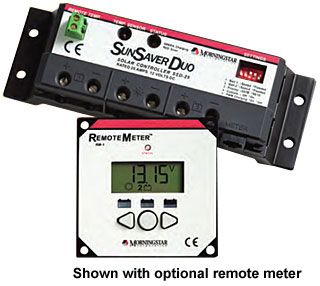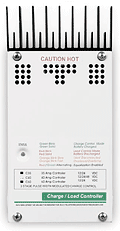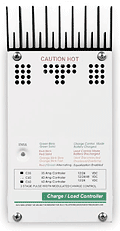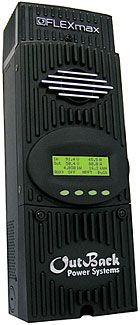CHARGE CONTROLLERS
Charge controllers or voltage regulators protect batteries from being overcharged, which can shorten their life as well as the life expectancy of the equipment being powered. Electronic circuitry in the regulator measures battery voltage, which rises as the battery state-of-charge (SOC) increases. At some voltage (which is different for different types of batteries at different temperatures), the regulator will limit the charging of the battery.
Regulators for photovoltaic (solar electric), wind and water powered systems perform the same function as a voltage regulator in an automobile. However a regulator from a car will not work in a remote power system due to a few differences. Advanced features found in most charge controllers are: low voltage disconnect (LVD), lighting controls, adjustable settings for different battery types, auto equalization, fusing, temperature compensation and reverse polarity protection. Some regulators charge using pulse width modulation (PWM) while others use simple on/off schemes.
Read More About Charge Controllers ...




